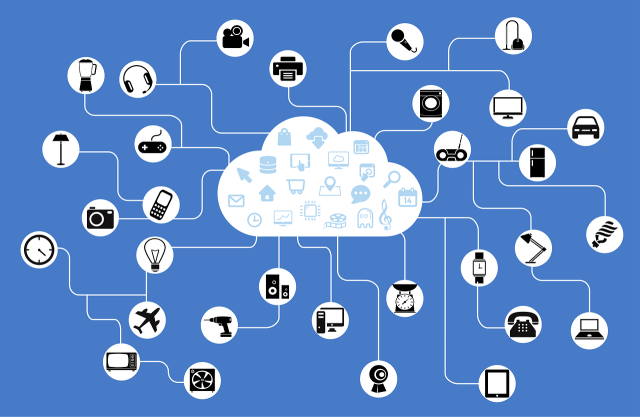
From smart TVs to wearables, connected devices reshape daily life across the EU
Across the European Union, everyday objects are becoming part of an expanding digital ecosystem. Whether monitoring heart rates, controlling household appliances, or streaming entertainment, more Europeans are adopting Internet of Things (IoT) devices that blend convenience, connectivity, and data-driven functionality. A new Eurostat report highlights the surge in usage, with the Netherlands leading the way: an astonishing 94.8% of Dutch residents use at least one connected device, followed by Ireland (90.6%) and Denmark (87.0%). At the other end of the spectrum, Poland (46.1%), Bulgaria (50.8%), and Romania (56.6%) lag behind, revealing a clear digital divide within the bloc.
Smart screens and wearables dominate
Among the many connected products on the market, Internet-enabled televisions remain the most popular, with 57.9% of EU residents reporting usage in 2024. Wearable technology, including smartwatches and fitness trackers, follows at 29.9%, reflecting the growing appeal of health and fitness monitoring. Other widely adopted devices include gaming consoles (19.5%), Internet-connected audio systems (19.3%), and smart speakers (16.0%).
Despite their promise, home automation systems—often referred to as smart home technology—are spreading more slowly. Only 14.2% of respondents use Internet-based energy management systems, 12.8% own smart appliances, and 11.8% have connected home-security devices. Connected cars are used by 10.5%, while 7.9% report using health-specific IoT devices and a mere 2.3% own Internet-linked toys.
Italy catches up
Italy mirrors these trends, with national statistics agency Istat noting the growing importance of connected gadgets. Smartwatches, soundbars, and action cameras have recently been added to Italy’s consumer price index basket, underlining their integration into daily life. Online shopping also continues to expand between 2023 and 2024, e-commerce purchases grew by 2.2 percentage points. Italians are increasingly using the Internet to interact with public services as well, especially to obtain information, even as fewer citizens use government websites to download official forms or schedule appointments.
In terms of online behaviour, Italians remain heavy users of communication platforms. In 2024, 73.4% of Internet users engaged in instant messaging, 66% made web calls, and 62% used email. Streaming content is also popular, with 57.4% watching videos on platforms like YouTube, Instagram, or TikTok and 49.4% listening to music via web radio or streaming services. Nearly half of Italian users search online for product information (48.2%) or health-related content (46%), while 44.3% access banking services.
Interestingly, Italian sales data challenge common assumptions about who drives the wearable boom. Roughly 2.4 million smartwatches were sold in 2024, with older adults leading the market: usage reaches 43% among those over 55, compared to 38% for ages 35–54 and just 19% among under-35s. Men account for a slight majority of purchases (51%), defying the notion that connected devices are primarily a youth-driven trend.
Regional contrasts and barriers
The Czech Republic illustrates both the opportunities and limits of IoT expansion. Here, smartwatches are the most widespread connected device, owned by more than half the population, while smart homes—equipped with automated lighting, climate control, and security—have grown from 7% of households to 23% in just five years. Adoption is concentrated among younger families (ages 18–44), but high costs remain a significant obstacle to wider penetration.
To overcome these barriers, the Czech government is supporting digitalization programs in schools and hospitals and fostering collaboration between start-ups and local authorities. Pilot projects focus on smart mobility, urban communication, and the potential role of artificial intelligence, yet basic digital access remains a more pressing concern than advanced IoT adoption.
Spain’s entertainment surge
In Spain, entertainment drives the connected lifestyle. In 2024, 83% of Internet users engaged with smart home entertainment systems, placing the country among the EU’s top three for smart TV penetration, behind only Malta and Ireland. Gaming consoles, connected audio systems, and smart speakers round out a booming market fuelled by Spain’s strong digital media culture.
This expansion coincides with a global wave of technological investment. According to a McKinsey report, 2024 saw record funding across multiple tech sectors, with artificial intelligence attracting $124.3 billion in investment and being adopted by 78% of surveyed companies. Even higher capital flows went into electric and autonomous mobility, which drew $132 billion. Spain’s leadership in connected entertainment reflects not only domestic demand but also Europe’s role in a worldwide race toward innovation.
A connected future
From Amsterdam to Madrid, the IoT revolution is reshaping how Europeans live, shop, and communicate. While wealthier northern countries lead in adoption and southern and eastern regions still face economic hurdles, the trend is unmistakable: connected devices are becoming a staple of modern life. As costs decline and technology advances, Europe’s digital landscape will only grow more integrated—linking homes, health, and entertainment into a seamless network of smart possibilities.



 Subscribe
Subscribe